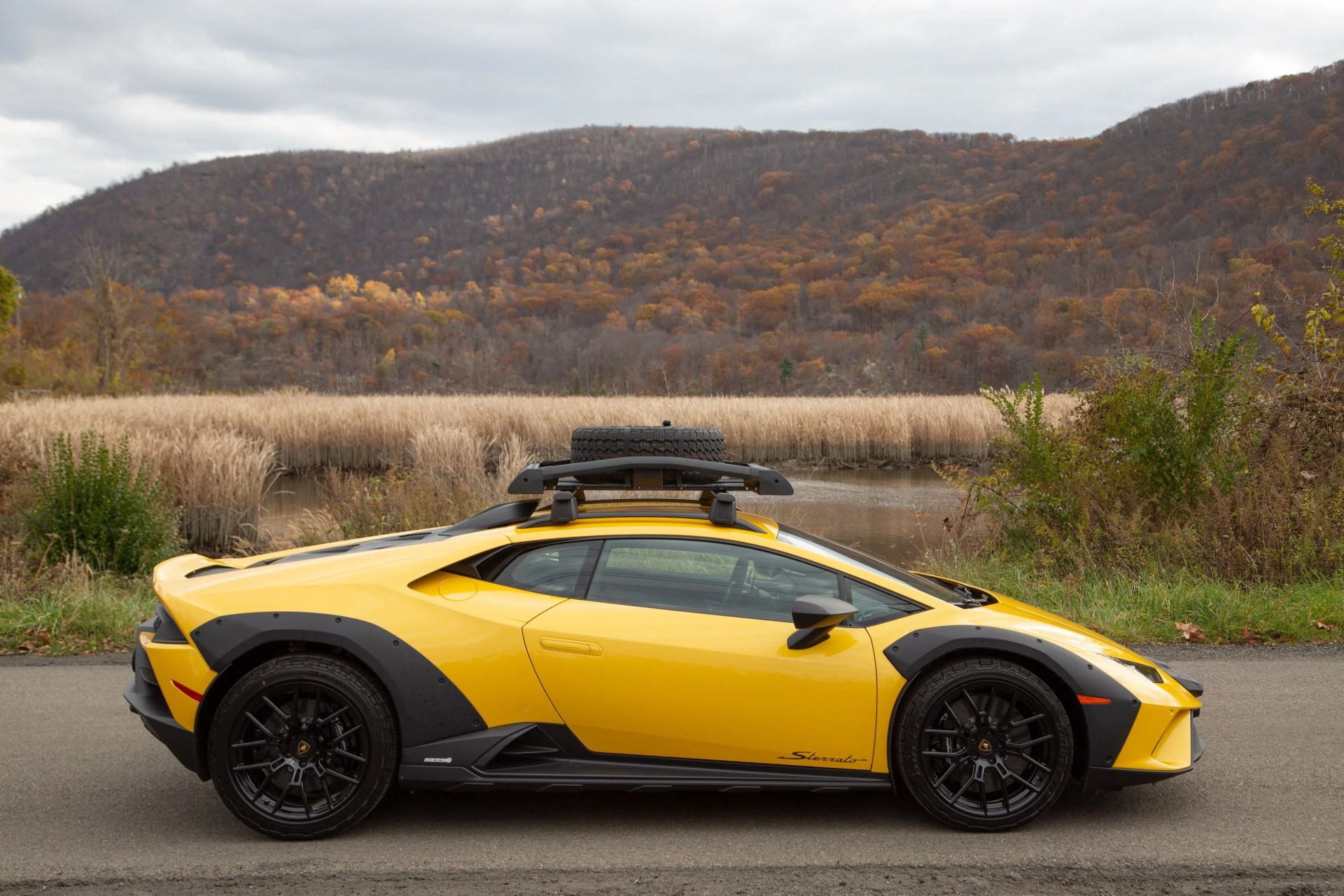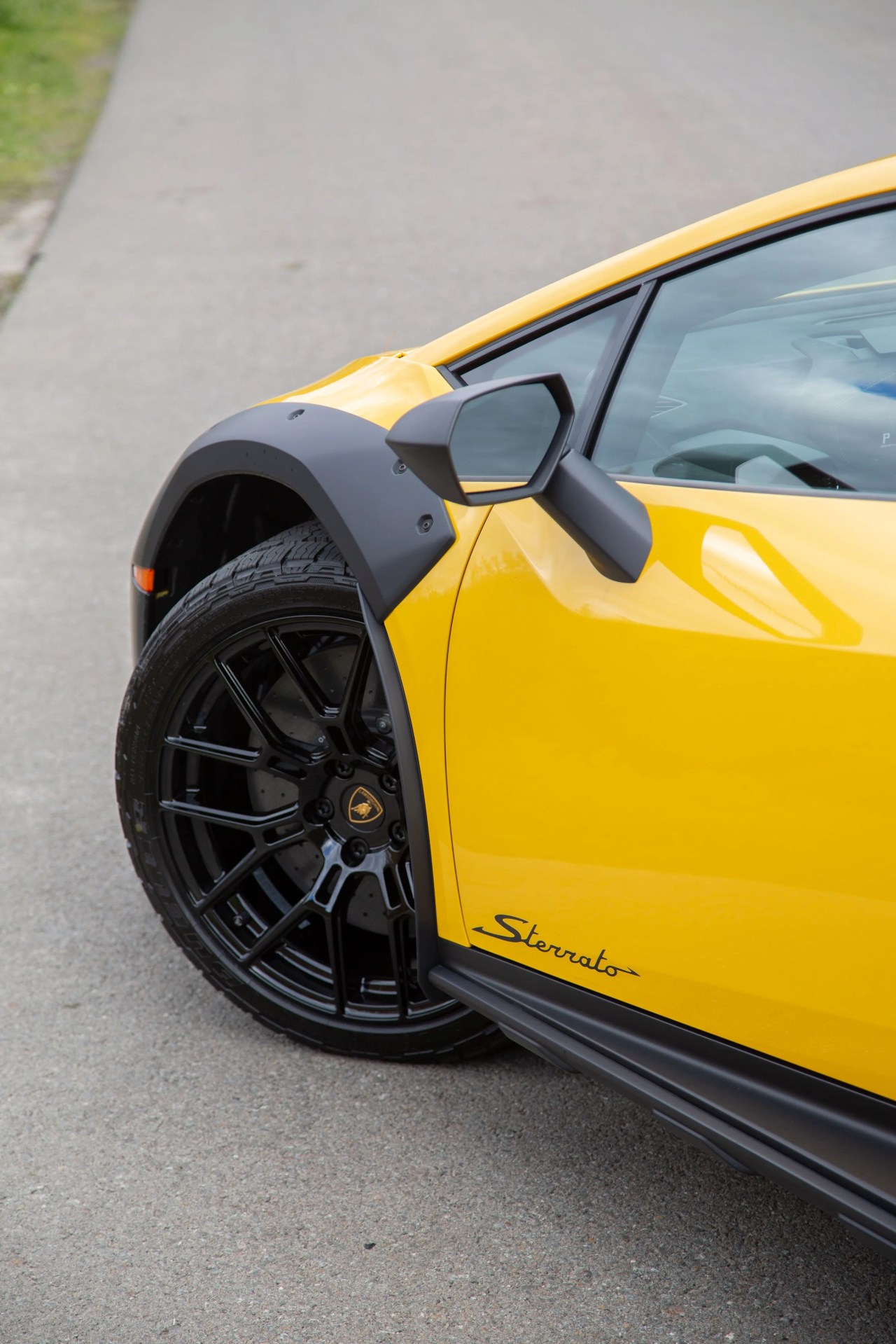Lamborghinis and the real world, traditionally speaking, have not been great bedfellows. Ferrucio’s mechanical prodigy have long been perfect for fantasy — be it on the silver screen, on the bedroom wall or for the perfect day’s drive through the Alps — but commuting to work, taking the kids to school or slogging across the land on an interstate highway are all tasks that Raging Bulls have been, shall we say, less than ideal for.
Admittedly, things have been growing better on this count. The Urus crossover, of course, is the clearest proof of that; set aside its extroverted exterior and it’s basically a Porsche Cayenne Turbo GT with Italian citizenship. But even Lamborghini’s sports cars have become more civilized with each generation: adding comfort features, growing easier to drive, enabling drivers to reverse without hanging out an open door.
The Huracan Sterrato, though, takes this trend in a new direction. Designed and presented as a sort of rally-spec exotic, it is, in truth, an application of sport-utility vehicle principles to low-slung supercars. And in some ways, that makes it better — perhaps not on racetracks or dream roads, but in the world most of us actually drive in every day.
2023 Lamborghini Huracan Sterrato: What We Think
The Huracan Sterrato may be the most unusual Lamborghini in ages; indeed, it’s arguably the vanguard of a whole new class of automobiles, the off-road sports car. It still delivers everything you’d expect from a Lambo, from exotic style to remarkable performance and advanced tech.
But it also holds an additional, separate appeal for many of the same reasons buyers in more proletarian classes choose crossovers over sedans. It rides slightly higher, and thus is easier to enter and exit; it has a taller suspension and bigger sidewalls, and thus rides more comfortably. Yet this comes at little cost to its acceleration, braking and handling — at least, at the limits drivers are likely to explore in real-world conditions.












